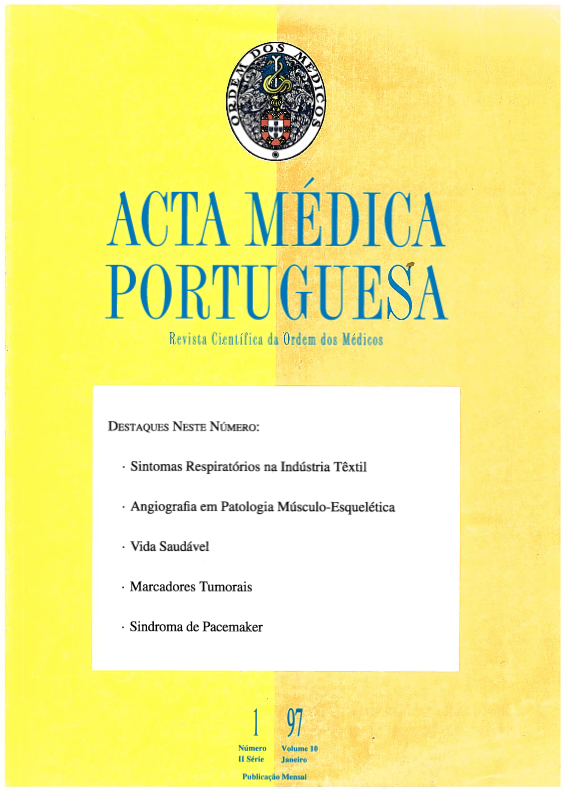Respiratory symptoms in the textile industry. Their prevalence in the Vale do Ave.
DOI:
https://doi.org/10.20344/amp.2378Abstract
Some workers in the textile industry have respiratory symptoms related to their occupation. This study is aimed at evaluating the frequency of respiratory symptoms in textile industries in the North of Portugal. We evaluated 3529 workers from 20 factories (19 deal with synthetic fibres and cotton and the other deals with sisal.) Among the workers, there were 34.5% with respiratory symptoms - 24,5% referred nasal symptoms, 22,6% with bronchial symptoms and 12,6% associated both. The workers who dealt with cotton presented a higher frequency of bronchial symptoms (25,0%) than the ones dealing with synthetic fibres (12,7% p < 0,000001). The same was noticed among the workers in the opening and spinning areas, who showed a higher frequency of bronchial symptoms (28,3%) than the ones in weaving areas (12,7% p < 0,000001). We did not find any differences concerning the frequency of symptoms among the workers handling both natural fibres (cotton and sisal). Individually all the symptoms were more frequent among the workers handling natural fibres. The most frequent symptom depended on the fibre. Cough was more frequently mentioned among the workers handling synthetic fibres (9.6%) and cotton (15.7%). Among the workers who handle sisal, dyspnea was the most frequently mentioned (16.9%). Productive cough was the most frequent association (7.2% sisal; 2.8% synthetic; 8.0% cotton), and the association between dyspnea and wheezing the least mentioned (6.4% sisal; 0.5% synthetic; 5.9% cotton). The workers with bronchial symptoms (synthetic fibre and cotton) have more years of exposure and greater smoking habits. In a covariance adjusted for age and smoking habits, the workers with bronchial symptoms, exposed to cotton have more years of exposure.Downloads
Downloads
How to Cite
Issue
Section
License
All the articles published in the AMP are open access and comply with the requirements of funding agencies or academic institutions. The AMP is governed by the terms of the Creative Commons ‘Attribution – Non-Commercial Use - (CC-BY-NC)’ license, regarding the use by third parties.
It is the author’s responsibility to obtain approval for the reproduction of figures, tables, etc. from other publications.
Upon acceptance of an article for publication, the authors will be asked to complete the ICMJE “Copyright Liability and Copyright Sharing Statement “(http://www.actamedicaportuguesa.com/info/AMP-NormasPublicacao.pdf) and the “Declaration of Potential Conflicts of Interest” (http:// www.icmje.org/conflicts-of-interest). An e-mail will be sent to the corresponding author to acknowledge receipt of the manuscript.
After publication, the authors are authorised to make their articles available in repositories of their institutions of origin, as long as they always mention where they were published and according to the Creative Commons license.









